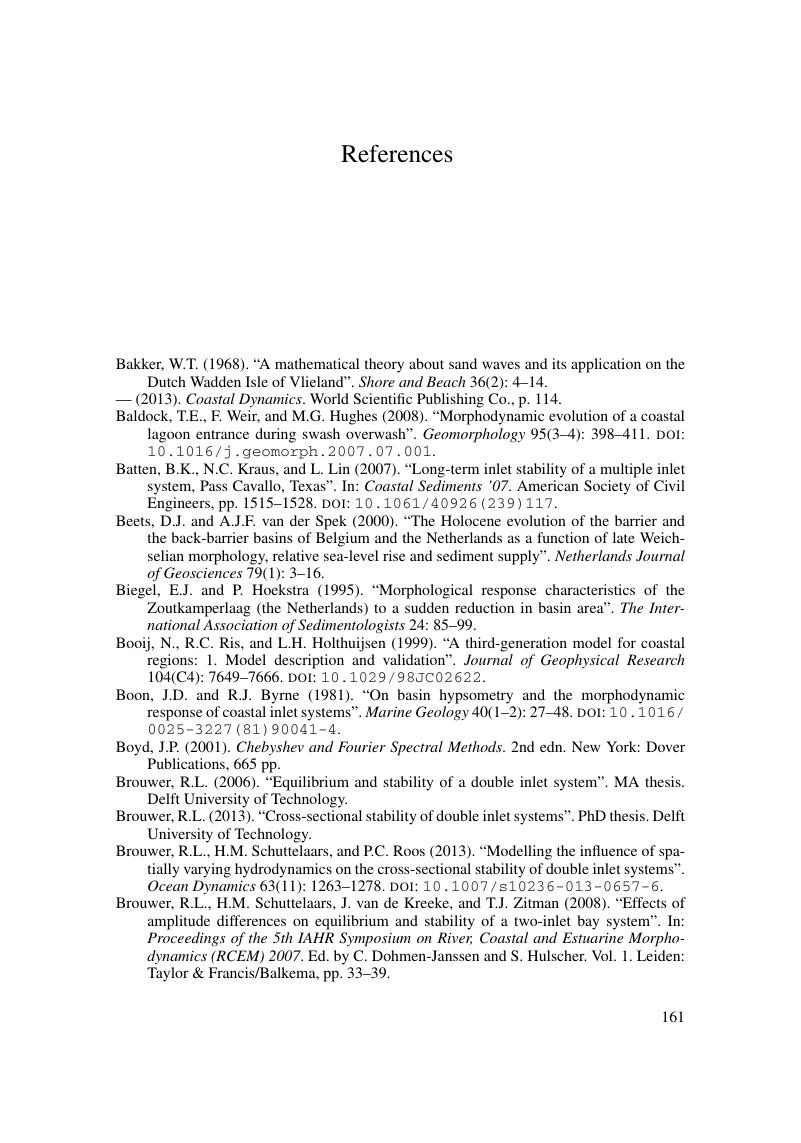Book contents
- Frontmatter
- Contents
- Preface
- 1 Introduction
- 2 Geomorphology
- 3 Sand Transport Pathways
- 4 Sand Transport and Sand Bypassing at Selected Inlets
- 5 Empirical Relationships
- 6 Tidal Inlet Hydrodynamics; Excluding Depth Variations with Tidal Stage
- 7 Tidal Inlet Hydrodynamics; Including Depth Variations with Tidal Stage
- 8 Cross-Sectional Stability of a Single Inlet System
- 9 Cross-Sectional Stability of a Double Inlet System, Assuming a Uniformly Varying Basin Water Level
- 10 Cross-Sectional Stability of a Double Inlet System, Assuming a Spatially Varying Basin Water Level
- 11 Morphodynamic Modeling of Tidal Inlets Using a Process-Based Simulation Model
- 12 Morphodynamic Modeling of Tidal Inlets Using an Empirical Model
- 13 River Flow and Entrance Stability
- 14 Engineering of Tidal Inlets
- References
- Index
- References
References
Published online by Cambridge University Press: 04 July 2017
- Frontmatter
- Contents
- Preface
- 1 Introduction
- 2 Geomorphology
- 3 Sand Transport Pathways
- 4 Sand Transport and Sand Bypassing at Selected Inlets
- 5 Empirical Relationships
- 6 Tidal Inlet Hydrodynamics; Excluding Depth Variations with Tidal Stage
- 7 Tidal Inlet Hydrodynamics; Including Depth Variations with Tidal Stage
- 8 Cross-Sectional Stability of a Single Inlet System
- 9 Cross-Sectional Stability of a Double Inlet System, Assuming a Uniformly Varying Basin Water Level
- 10 Cross-Sectional Stability of a Double Inlet System, Assuming a Spatially Varying Basin Water Level
- 11 Morphodynamic Modeling of Tidal Inlets Using a Process-Based Simulation Model
- 12 Morphodynamic Modeling of Tidal Inlets Using an Empirical Model
- 13 River Flow and Entrance Stability
- 14 Engineering of Tidal Inlets
- References
- Index
- References
Summary

- Type
- Chapter
- Information
- Tidal InletsHydrodynamics and Morphodynamics, pp. 161 - 171Publisher: Cambridge University PressPrint publication year: 2017



